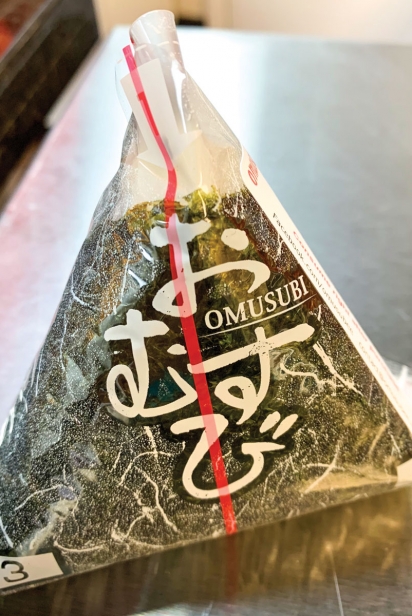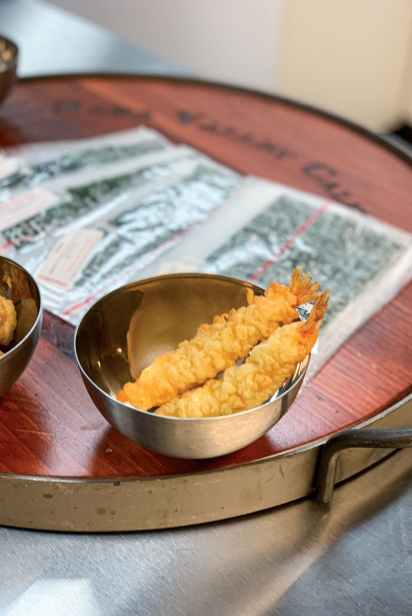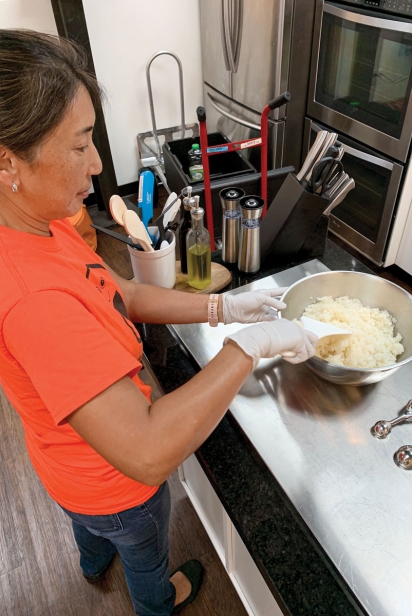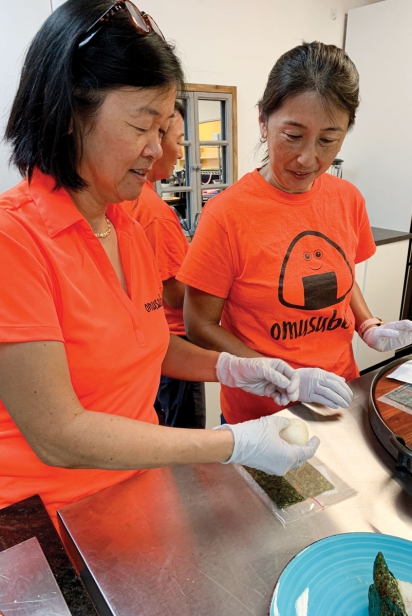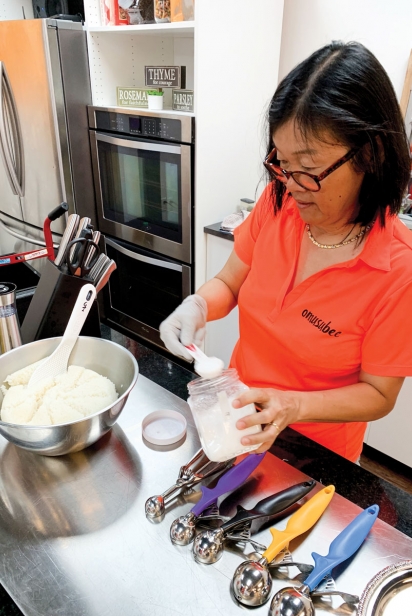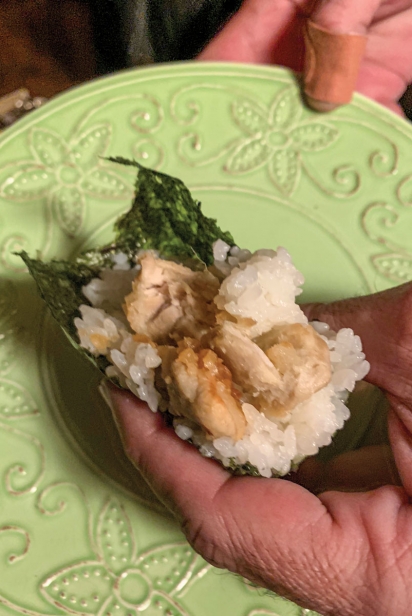Omusubee: Having a (Rice) Ball in South Florida
Soccer games, t-ball and karate competitions are all places where parents and families get together and meet in South Florida. For Ana Imai, Regina Yamamoto and Raquel Hada, it was at their kids’ swim meets at the Coral Springs Aquatic Complex. They heard each other speaking Portuguese and soon discovered they had more in common than kids who swam.
Each had grown up in São Paulo, Brazil, home to the largest Japanese population outside of Japan. Imai and Yamamoto discovered they were born in the same town, Mogi das Cruzes. All had spent time visiting Japan – Ana in the northern island and the others in Tokyo. And each moved to South Florida when their husbands were transferred: Imai, an MD; Yamamoto, who worked in an office; and Hada, who taught phys ed and Pilates.
Cultural Melting Pot
The women brought with them love of Japanese foods they grew up with, but also the foods of the many immigrant groups who had settled in the São Paulo metropolis. “It was a mix-up of Japanese, Italian, Syrian, Brazilian,” explains Imai. “We love rice, beans, plantains, spaghetti, pita bread.”
One of the familiar comfort foods was omusubee, stuffed rice balls also called onigiri. They’re tasty.full of carbs and protein, and convenient, says Imai. “It can be a triangle, a log, a ball.” You bring them on a picnic, pack it in a lunchbox, make it part of a bento box, even take it to the movies instead of eating popcorn, she says. The savory fillings, which range from simple pickled vegetables to fried foods, leave plenty of room for improvisation.
A Business Starts
A friend asked the women if they’d make the snacks for an event at Morikami Museum and Gardens in Delray Beach. They liked the experience enough to start a small business and see where it went.
The women found a commercial kitchen close to home, Pro Kitchen Hub, and located a major supplier of Japanese rice and other specialty products in Pompano Beach. The women started experimenting with traditional fillings and flavors from their childhood, like umeboshi (pickled plum); chicken karage; salmon and tempura shrimp.
Next step: Finding places to sell their foods. They found receptive audiences at Japanese festivals in South Florida, at Morikami and Ichimura–Miami Japanese Garden on Watson Island, Redland Fruit and Spice Park and the Miami Beach Botanical Garden. Anime and Comic-Con gatherings – Orlando MegaCon, Florida Supercon, Sunrise ComicCon and Otakufest – turned out to be great for business, says Imai, where fans were familiar with onigiri. “There’s a scene in “Spirited Away” where a crying girl is eating a rice ball for comfort,” she says. Fans of Pokémon anime recognize onigiri as “jelly donuts” as the result of odd dubbing.
In between festivals, their company, Omusubee, needed a regular venue for their products. They found it in the University of Miami market on Wednesdays, where students buy the rice balls and pop them in their backpacks. “Students like it. It’s very convenient – they just take it back to the dorm,” Imai says. The university’s large international population makes it an easy sale.
The Omusubee team adds new flavors along the way, incorporating local flavors like chickpea curry inspired by Trinidadian doubles, and adding some non-traditional touches like sauces at the request of their customers. “We’re always tasting!” says Imai. “We want our customers to be happy.”
All About Omusubee
Snacks made from savory rice flavored with meats, fruits, pickles, fish or cheese are found in cuisines all over the world. In Chinese and Indonesian cooking, sticky rice is wrapped in lotus leaves. In Italy, balls of risotto are stuffed with cheese, breaded and fried to make arancini. In Hawaii, grilled Spam is laid on a block of rice and wrapped tidily with a strip of nori. Japan’s rice balls, known as omusubee (also spelled omusubi) and onigiri, date back more than 2,000 years. They were traditionally formed into a triangle, like a mountain. Later, the Japanese started to wrap the onigiri in nori – dried seaweed – so their hands wouldn’t get sticky from touching the rice. The seaweed wrapping also made the compact snacks portable for travels. Because there was no refrigeration, they were filled with salty or sour ingredients to act as preservatives.
Today, omusubee is an inexpensive and satisfying low-fat treat sold in convenience stores in Japan. They’re available in a wide range of flavors, including traditional Japanese fillings, like salmon flakes with shiso; kimchi; eel; kombu; grilled codfish roe; salmon roe and pickled mustard greens. But they also lend themselves to mashups from other places, like tuna mayo, similar to American tuna salad, a best-seller introduced in the 1970s.
Making Omusubee for the Markets
Before every market or festival day, the women of Omusubee start making rice balls at 5am. They make enough just for that day. Prep for fillings varies – some are simple, like kimchi or pickled ume, while others, like miso pork, are first cooked sous-vide. Chicken karage is marinated with garlic and ginger, then fried. Tempura shrimp is already cooked. The rice they use is tamanishiki, a Japanese short-grain rice with rich flavor and a firm texture that allows it to be shaped. Unlike rice for sushi, which is cooked and seasoned with rice vinegar, sugar and salt, onigiri rice is simply seasoned with salt. Ana scoops a large spoonful of warm rice into her hand, adds a bit of filling (this is pickled plum), tops it with more rice, then shapes it into a triangle, gently pressing the rice together.
The ingeniously designed packaging was designed to keep the moist rice separate from the toasted nori so it doesn’t get soggy: “Japan did the work for us,” says Ana. They buy the cellophane wrappers, add a label identifying the filling, then fold the wrapping around the onigiri with origami-like precision [6]. The customer opens the package by following the numbers: pulling down the strip to open the wrapping, and lifting off the sides to expose the nori. Their fingers never touch rice, and the nori remains crisp. Everything they use to fill their rice balls is cooked, not raw. Popular flavors include chicken karage; tuna salad; cured salmon; hickory salmon; Brussels sprouts and kimchi.
Omusubee
Find them weekly at the Wednesday market at the University of Miami and various events throughout South Florida, including anime conventions.



